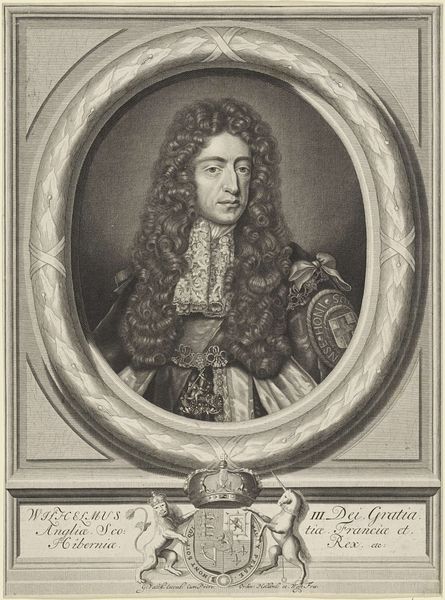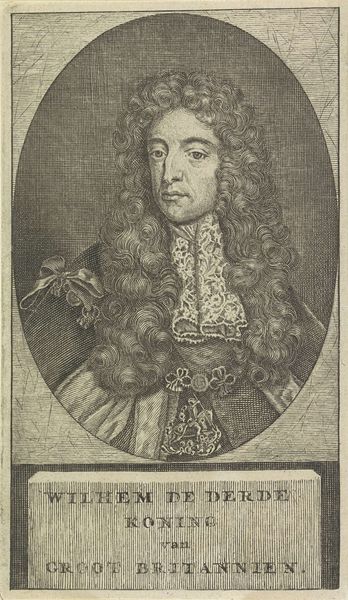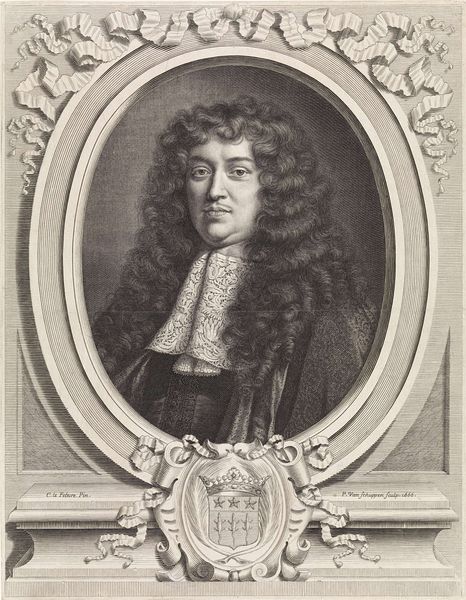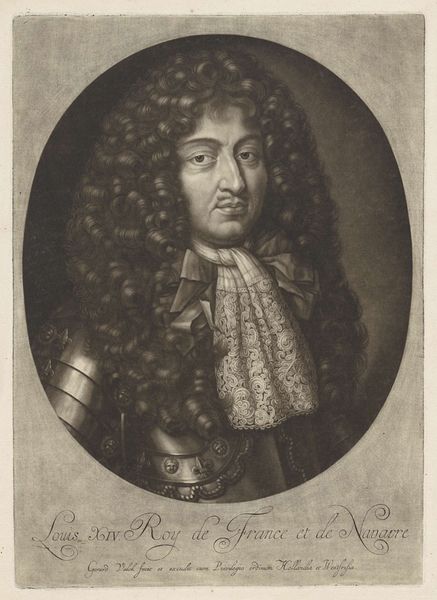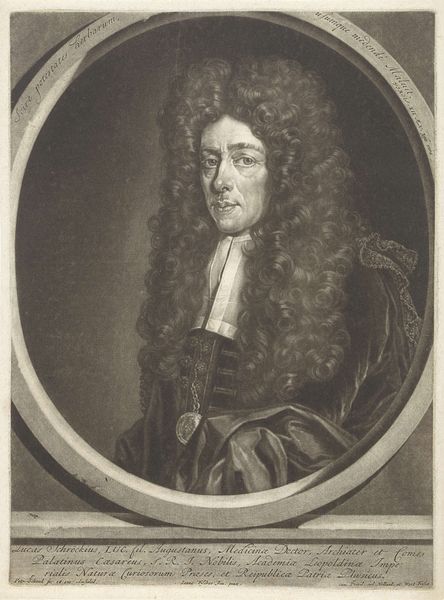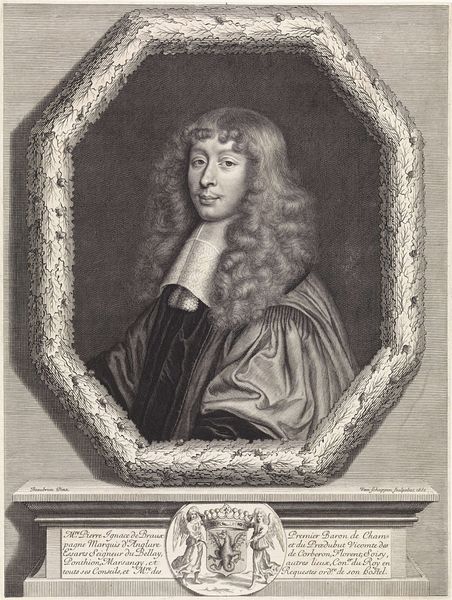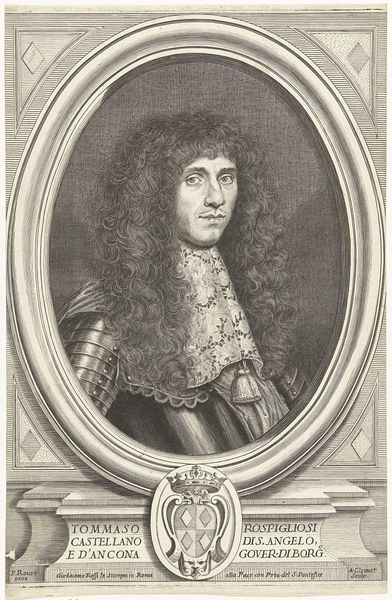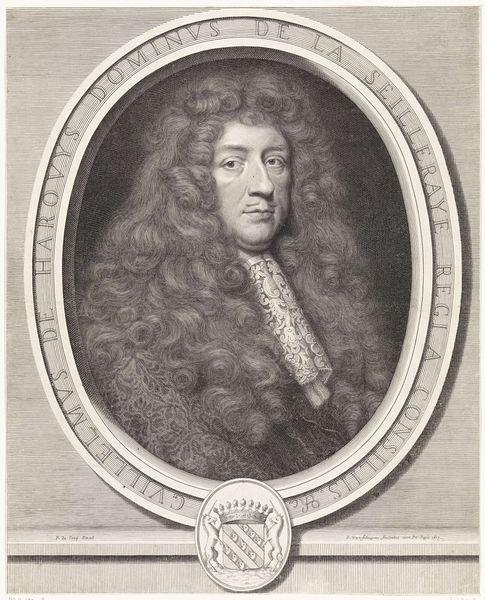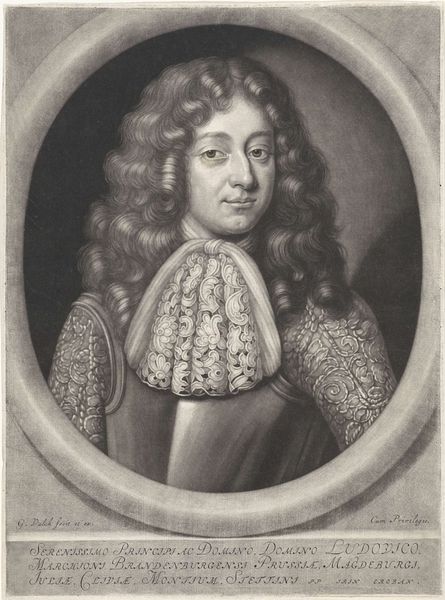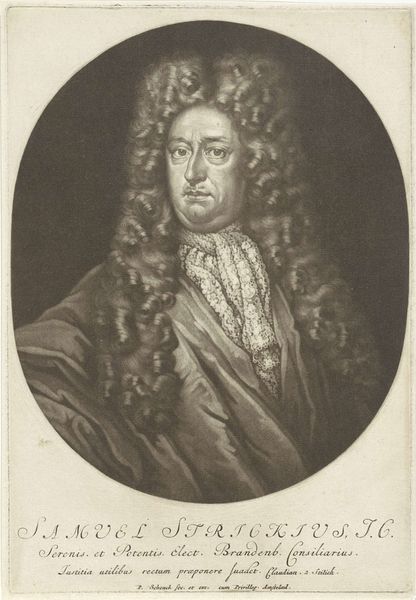
print, engraving
#
portrait
#
baroque
# print
#
charcoal drawing
#
engraving
Dimensions: height 348 mm, width 252 mm
Copyright: Rijks Museum: Open Domain
Editor: Here we have a print titled "Portret van Willem III, prins van Oranje," dating between 1688 and 1726, and attributed to Gerard Valck. It's an engraving, a portrait encased in an oval frame, depicting William of Orange wearing a crown. The detail is incredible! What symbolic significance do you see in this image? Curator: This print vibrates with symbols that echo across centuries! Consider the crown. Beyond its obvious representation of royalty, crowns carry within them layers of cultural meaning - authority, divine right, but also burden. How does this particular crown's design and its rendering contribute to our understanding of William's rule? Look at the text framing the portrait; they amplify the messages conveyed. The texts become spells or prayers meant to protect and legitimize his image for the present and for future viewers. Editor: So the texts are like a verbal equivalent to the visual power of the crown and scepter? Curator: Precisely! Images and words, light and shadow – all converging to construct a lasting representation of power and identity. It's almost as if Valck aimed to freeze William III within a cultural memory, ensuring his legacy continued undiminished. Does the formality and intensity evident within the image echo through to your own understanding? What lasting messages of leadership and cultural impact do you interpret? Editor: Definitely, and the symbolism feels very deliberate and layered. It's not just a picture of a king, it's a carefully constructed statement about power, legacy, and perhaps even a plea for remembrance. Curator: Exactly! These artifacts transport ideas through time. Appreciating them reveals shared dreams and anxieties from the past, mirrored across today's landscapes.
Comments
No comments
Be the first to comment and join the conversation on the ultimate creative platform.

